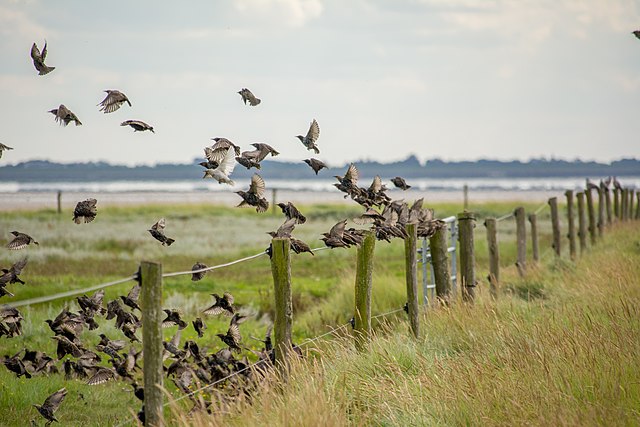QUICK TIPS: Non-native birds can cause a variety of problems, and often outcompete native cavity nesters.
THE PROBLEM WITH ALIEN BIRDS – ADAPTED FROM ALIEN BIRDS IN NORTH AMERICA
An alien species is defined as one “that is not native” to a particular ecosystem. In North America today, there are as many as 97 non-native (alien) bird species with self-sustaining populations. These include game birds (like pheasants) and escaped pet birds (primarily parrots). Others, such as house sparrows (Passer domesticus), European starlings (Sturnus vulgaris), and mute swan (Cygnus olor), were originally introduced for aesthetic reasons or to control agricultural insect pests, and have become invasive.
Not all alien species are invasive. Invasive species are opportunistic, and able to exploit human-altered environments for food, roost sites and nesting. They provide little if any benefit in return.
The establishment of alien bird populations through purposeful or accidental introductions has resulted in many problems including crop damage, transmission of disease, adverse impacts to native species, and aircraft safety concerns. The estimated costs associated with alien bird species in North America probably approaches $2 billion a year.
Although many alien bird species apparently cause minimal or no harm, others are considered persistent and destructive pest species. The challenge for wildlife managers is often one of public opinion and education rather than identifying effective management and control strategies. The will of the public overrides the scientific and economic need to manage aggressively to reduce detrimental alien bird populations.
Many people need a first hand encounter before they will resort to active control methods. For example, they may experience a House Sparrow attack on nesting bluebirds. It is unfortunate that they cannot learn from the experiences of others.
References and More Information:
- Alien Birds in North America – Challenges for Wildlife Managers, Avery, Michael L. and Tillman, Eric A., January 2005
- Executive Order 13112, Invasive Species, February 1999
- House Sparrow attacks (accounts)
- House Sparrow Management
Despite explicit warnings, the consequences of the invasion were underestimated.
– John Chilcot
